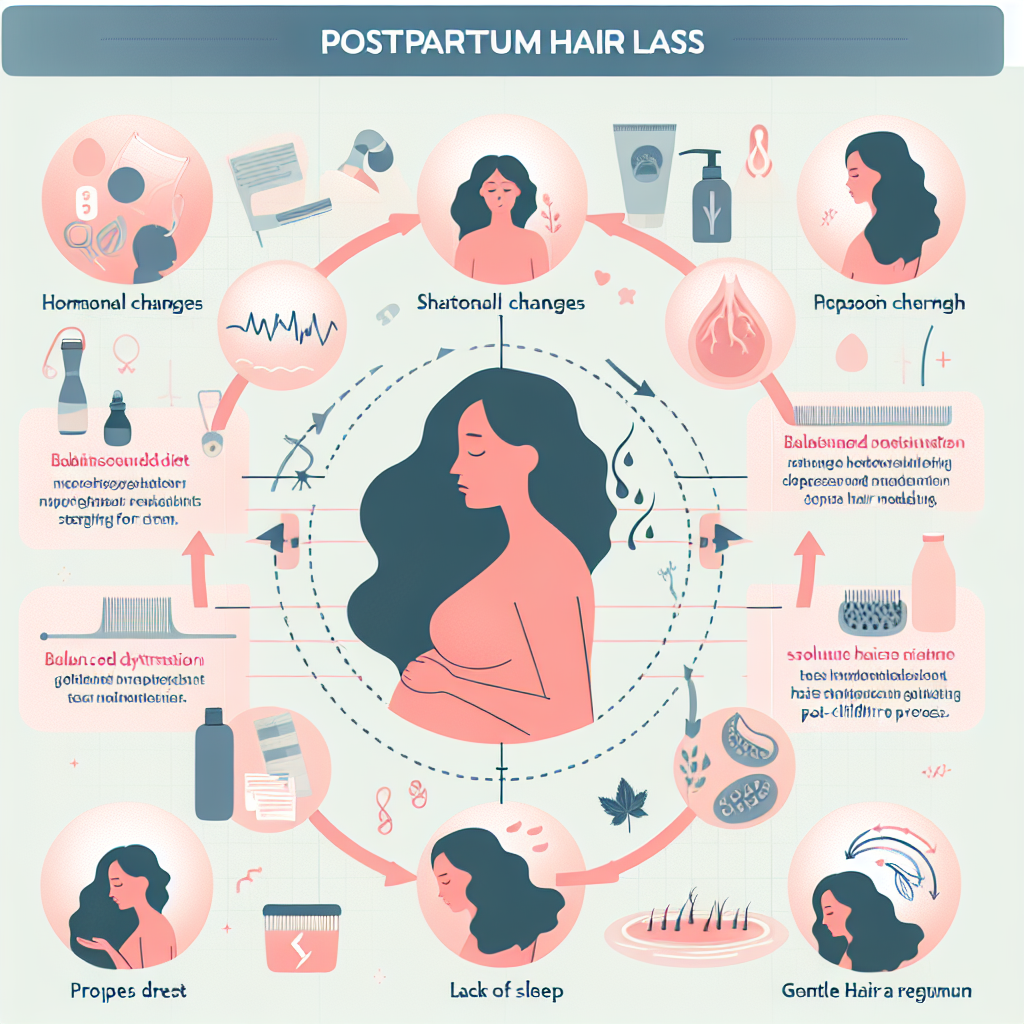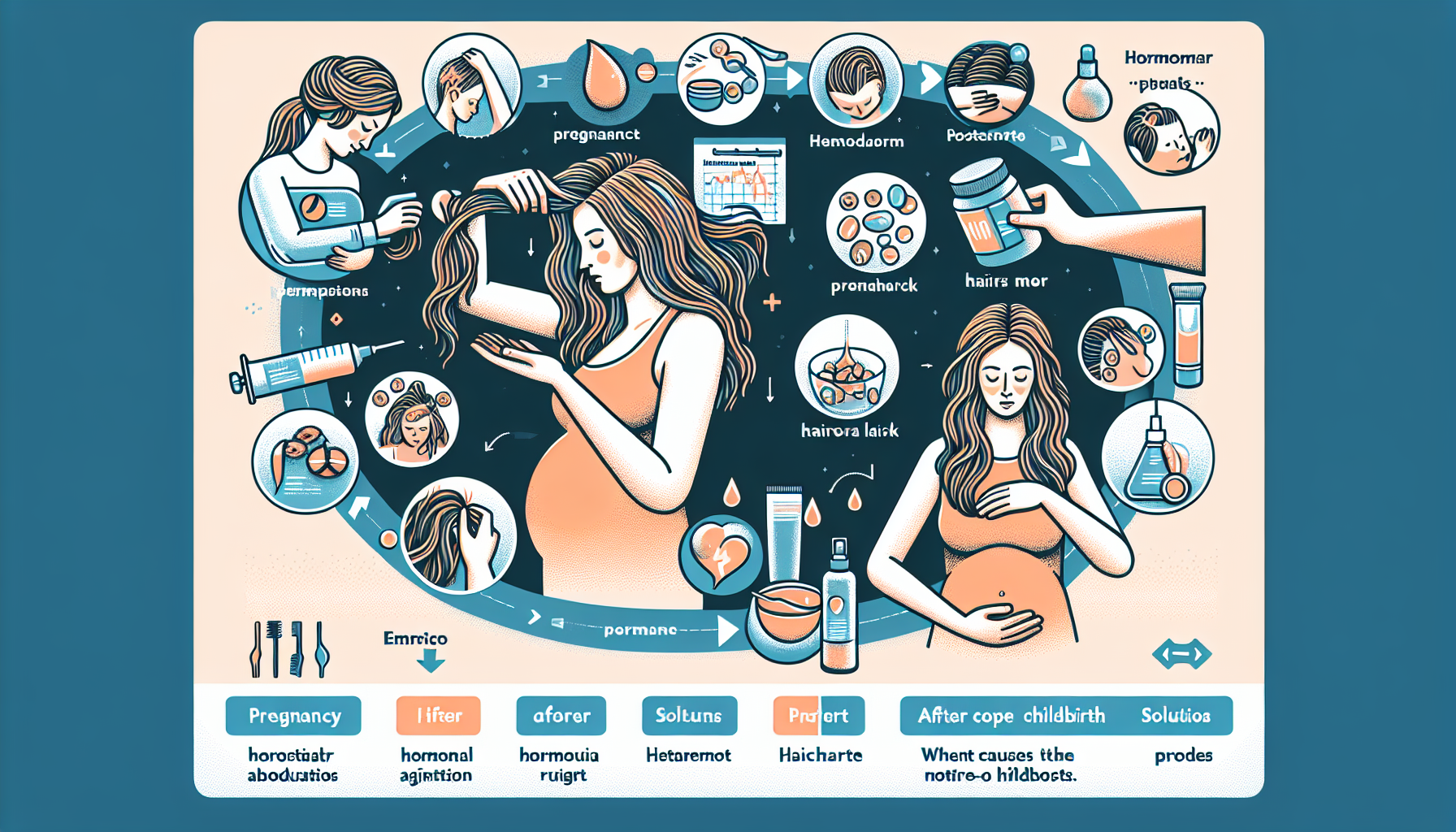Discover when postpartum hair loss begins, what causes it, and how to manage hair shedding after childbirth. Learn about the timeline and solutions.
Welcoming a new baby into the world is a monumental experience filled with joy, love, and, often, numerous physical changes. While many women anticipate the excitement of motherhood, they may not be prepared for the changes their bodies will undergo, including postpartum hair loss. This article explores when postpartum hair loss begins, the reasons behind it, and effective ways to manage and minimize hair shedding during this transition.

Understanding Postpartum Hair Loss
Postpartum hair loss is a common phenomenon that affects many new mothers. It typically occurs in the months following childbirth and can lead to noticeable thinning or shedding of hair. Understanding the underlying causes and the typical timeline for hair loss can help alleviate concerns and provide insight into what to expect.
1. The Hair Growth Cycle
To comprehend postpartum hair loss, it’s essential to understand the hair growth cycle. Hair goes through three phases:
- Anagen Phase: The active growth phase where hair follicles produce new hair. This phase can last for several years.
- Catagen Phase: The transitional phase, lasting a few weeks, where hair growth slows, and the hair follicle shrinks.
- Telogen Phase: The resting phase when hair stops growing and eventually falls out. This phase typically lasts around three months.
During pregnancy, increased hormone levels prolong the anagen phase, resulting in thicker and fuller hair. After childbirth, hormone levels drop, which can trigger a higher number of hair follicles to enter the telogen phase simultaneously, leading to postpartum hair loss.
2. Hormonal Changes Post-Childbirth
After giving birth, a woman’s body undergoes significant hormonal shifts. The primary hormones involved in postpartum hair loss include:
- Estrogen: Levels of estrogen, which remained high during pregnancy, decrease sharply after childbirth. This sudden drop can trigger hair follicles to transition to the telogen phase.
- Progesterone: Similar to estrogen, progesterone levels fall post-delivery, contributing to hair shedding.
Understanding these hormonal changes can help new mothers comprehend why their hair may be falling out and provide reassurance that this is a normal part of the postpartum process.

When Does Postpartum Hair Loss Start?
Postpartum hair loss typically begins around three to six months after delivery. However, the timeline can vary depending on individual factors.
3. Common Timelines for Hair Shedding
- Initial Phase: Many women may notice that their hair appears thicker during pregnancy due to the increased hormones, but once those hormones drop after birth, hair loss may start around the third month postpartum.
- Peak Shedding: The shedding may peak around four to six months after delivery, which can be alarming for some women. It’s common to lose more hair than usual during this time.
- Recovery Phase: Most women will notice a gradual reduction in hair shedding by nine to twelve months postpartum, with hair starting to return to its pre-pregnancy growth cycle.
4. Individual Variability
Each woman’s experience with postpartum hair loss may differ based on factors such as:
- Genetics: Family history of hair loss can influence how significantly a woman experiences postpartum shedding.
- Nutritional Status: Diet and nutritional deficiencies can affect hair health and recovery.
- Overall Health: Conditions like thyroid imbalances or anemia can exacerbate hair loss.
Symptoms of Postpartum Hair Loss
Recognizing the symptoms of postpartum hair loss can help women differentiate between normal shedding and potential issues that may require medical attention.
5. Common Signs
- Increased Hair Shedding: A noticeable increase in hair fall, particularly during washing or brushing.
- Thinning Hair: Some women may notice thinning areas, especially around the hairline or temples.
- Changes in Hair Texture: Hair may feel different, often drier or coarser, as it undergoes changes postpartum.
If hair loss is accompanied by other concerning symptoms, such as severe itching, rashes, or scalp tenderness, it may warrant a consultation with a healthcare provider.
Managing Postpartum Hair Loss
While postpartum hair loss is typically a temporary condition, there are several strategies women can employ to manage shedding and promote healthy hair growth.
6. Nutrition and Diet
A balanced diet is crucial for overall health and can significantly impact hair health. Key nutrients for promoting hair growth include:
- Protein: Hair is primarily made of protein, so adequate protein intake is vital for maintaining hair health.
- Iron: Deficiency in iron can lead to increased hair loss, so including iron-rich foods such as spinach, lentils, and lean meats is essential.
- Vitamins and Minerals: Vitamins A, C, D, E, and minerals like zinc and biotin are important for hair growth. Consider incorporating foods rich in these nutrients or discussing supplementation with a healthcare provider.
7. Hair Care Practices
Gentle hair care practices can minimize damage and promote healthier hair during this shedding phase:
- Avoid Heat Styling: Limit the use of heat styling tools, as heat can weaken hair and cause further breakage.
- Use Gentle Products: Opt for sulfate-free shampoos and conditioners that are less harsh on the hair.
- Regular Trims: Keeping hair trimmed can help eliminate split ends and improve overall hair health.
8. Stress Management
Managing stress is crucial during the postpartum period, as high-stress levels can exacerbate hair loss. Consider practices such as:
- Mindfulness and Meditation: Engaging in mindfulness exercises can help reduce stress and improve emotional well-being.
- Physical Activity: Light exercise can help improve mood and promote relaxation.
- Support Networks: Connecting with other new mothers or joining support groups can provide emotional support and reduce feelings of isolation.
Internal Links for More Information
For further insights on postpartum topics and related content, check out these resources:
- Pregnancy Symptoms: Explore various symptoms experienced during pregnancy.
- Pregnancy Testing: Learn about the testing process during pregnancy.
- Postpartum Care: Find information on postpartum experiences and recovery.
External Links for Additional Resources
For expert advice and more comprehensive information on postpartum hair loss, consider visiting these reputable sources:
- American Academy of Dermatology: Offers insights on hair loss and scalp health (AAD).
- Postpartum Support International: A valuable resource for mental health and emotional support for new mothers (PSI).
- Mayo Clinic: Provides information on hair loss and tips for managing it (Mayo Clinic).
When to Seek Professional Help
While postpartum hair loss is usually temporary, there are instances where seeking medical advice may be necessary:
9. Persistent Hair Loss
If hair shedding continues beyond twelve months postpartum or worsens, it may be advisable to consult a healthcare professional or dermatologist for an evaluation.
10. Underlying Conditions
Conditions such as thyroid disorders, iron deficiency anemia, or alopecia areata can contribute to hair loss. A thorough examination and blood tests can help identify any underlying health issues.
Conclusion
Postpartum hair loss is a common experience for many new mothers, typically starting around three to six months after childbirth. This shedding phase can be attributed to hormonal changes and the natural hair growth cycle. While it can be alarming, understanding the timeline and causes can help alleviate concerns.
Managing postpartum hair loss involves a combination of proper nutrition, gentle hair care practices, and stress management. Each woman’s journey through postpartum hair loss is unique, and while it may take time for hair to return to its normal growth cycle, it is often a temporary condition.
If concerns arise regarding the extent of hair loss or if symptoms persist, reaching out to a healthcare provider can provide peace of mind and guidance. With patience and the right approach, new mothers can navigate this challenging phase while embracing their postpartum journey.